Linens and accessories
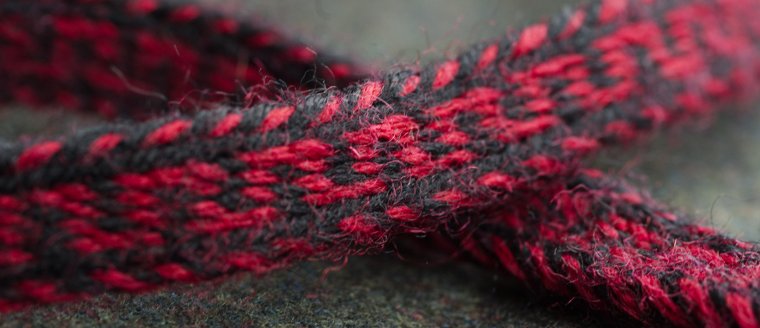
Some essential medieval garments and accessories I have made for Jarno.

Shirt, 2011
Shirt number 1, linen, with a standing collar, gathered neckline and sleeve ends.
The sleeves are extra long so that they create puffs through the doublet sleeve lacings. First I only hemmed the sleeve ends, but they were horribly impractical with anything but the doublet so that I had to gather them into a band later.
I've also made another almost identical shirt of a finer linen.

Shirt, 2012
Another, more simple shirt to wear with basic tunics. The sleeves are shorter and narrower, and the shirt body is also a bit narrower as the neck is not gathered.
Later I have made about 4-5 of similar ones, as it's nice to have several fresh shirts on a summer camp.

Separate hose, 2012
When the joined hose proved somewhat impractical I made a pair of separate ones to wear with longer tunics. After battling with the joined hose it was ridiculously easy to pick the leg part of the pattern and make a pair of short hose.
First I made a red pair to wear with the blue houppelande and a bit later another pair from the remains of the dark green wool I had used for the joined hose.
Like the joined hose these are also cut on the bias. I sewed the back seam with a narrow zig zag so that it would be elastic, and finished the hemming and the seam allowances by hand.

This type of earlier separate hose is fastened to a belt only on the point at the front. As I was kinda in a hurry when making the first pair I just made a elastic belt with brace clips, and haven't gotten to making a proper pair of belted braies yet. Anyway, the elastic belt is comfortable and it's hidden anyway.
On the front corner I added a scrap of sturdy linen for reinforcement.
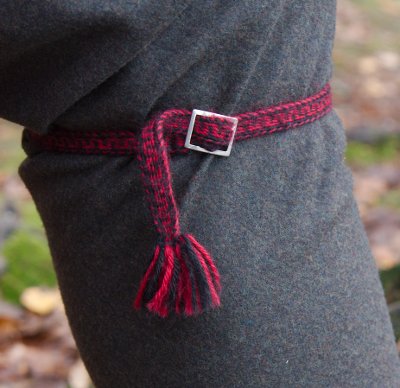
Garters, 2012
The hose also need garters to fit well and stay up (as I learned pretty soon after making the first joined pair).
Garters were the perfect project for trying a favored technique among many medievalist, tablet weawing. I picked the pattern from Maikki Karisto's book "Lautanauhat". It worked well on a garter as both sides look almost identical. I used woollen thread, which gave the garters plenty of stretch. The ends are finished in a modern shortcut of machine stitch.
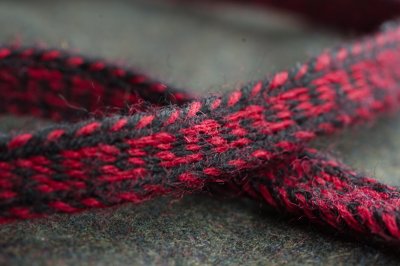
I had chosen a very easy pattern where I could turn all the cards at once and always on the same direction, but nevertheless even a small project such as this took some time. It was nice work, but still I don't see myself beginning a larger project in near future, but who knows...

Chaperon, 2012
Chaperon-hat evolved from a 14th century hood which some trendsetter began to wear like a hat. It is not known whether conspicious amounts of beer had anything to do with this, but personally I'm strongly inclined to believe the case being that. By the middle of 15th century the chaperon was made as a hat, with the original rolled front edge of the hood now made as a padded roll.
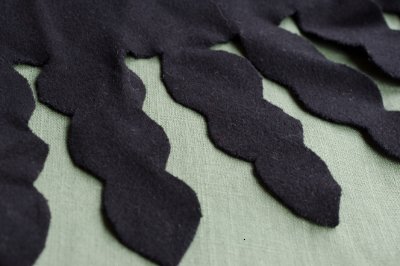
The model and the pattern come straight from Thursfield's "The medieval tailor's assistant", with the measurements adjusted to Jarno's head size of course. The gorget edge is dagged, and I also had a whim to cut the end of the liripe to a leaf shape.
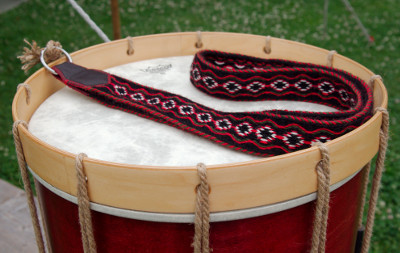
Sling
for side drum, 2014
When Jarno built himself a side drum I decided it was time to excavate my tablet weaving cards and try to contribute by making a sling.
While tablet weaving is a period technique, the thread I chose is rather thick and I picked the pattern just because it looked nice and not too complicated. No kind of historical precedent here.
The sling project was valuable practice in tablet weaving. Not only did I learn to turn the cards both front and back to create the pattern but also how important it is to get the loom even. First 50cm was fit for no use whatsoever, but rest was even enough, though the width is still irregular.
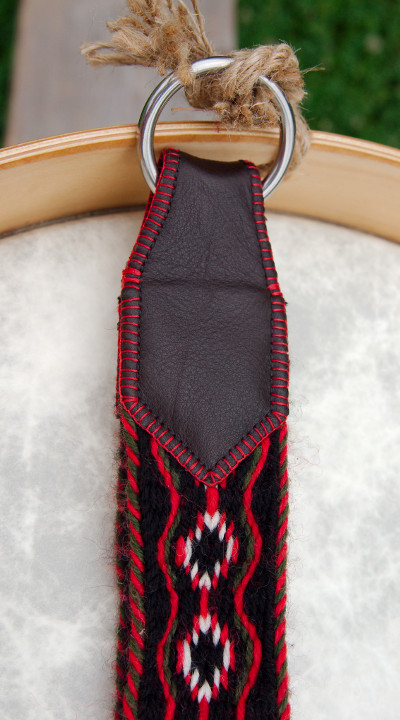
I'm not very good with leather but I joined the ends with an improvised leather thingy. Again no historical backround to this, it just seemed a practical solution.
Visually the outcome is pretty if kinda loud and psychedelic, it would actually look good on a 70's acoustic guitar. But they did love loud and colorful things in the medieval times too, didn't they?